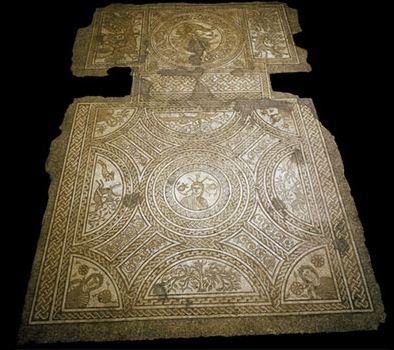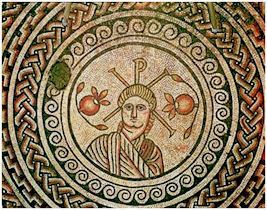Created 4thC (early) Material Ceramic | Period/culture Romano-British Registration 1965,0409.1 | |
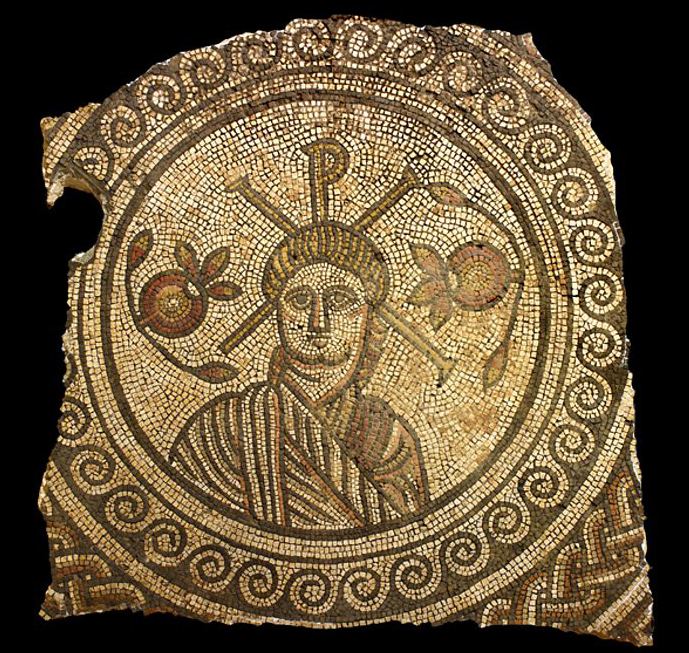 | ||
The Hinton St Mary Mosaic is a large, almost complete Roman mosaic discovered at Hinton St Mary in the English county of Dorset. It appears to feature a portrait bust of Jesus Christ as its central motif. The mosaic was chosen as Object 44 in the BBC Radio 4 programme A History of the World in 100 Objects, presented by British Museum director Neil MacGregor.
Contents

The mosaic covered two rooms, joined by a small decorated threshold. It is largely red, yellow and cream in colouring. On stylistic grounds it has been dated to the 4th century and is attributed to the workshop of the Durnovarian school of mosaic art. It is currently in storage at the British Museum, although the central medallion is on display there.

Christian panel
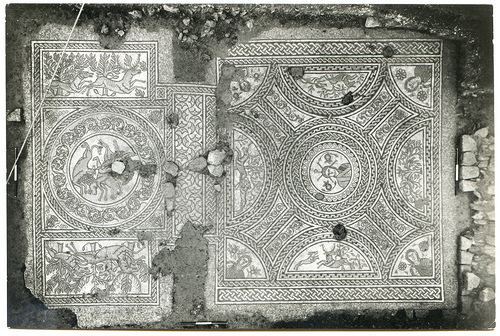
The panel in the larger room is 17 feet by 15 feet. A central circle surrounds a portrait bust of a man in a white pallium standing before a Christian Chi Rho symbol flanked by two pomegranates. He is generally identified as Christ, although the Emperor Constantine has also been suggested. There is much evidence to lead to the identification of this as Christ, not least the absence of any insignia or identifiers pointing to a particular Emperor. On each side of this are four lunettes, each featuring conventional forest and hunting vignettes, mostly of a dog and a deer. In the corners are four quarter circles containing portrait busts, either representing the winds or the seasons.
Pagan panel
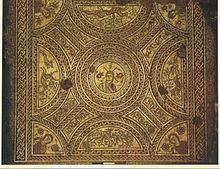
The panel in the smaller room is 16½ feet by 8 feet. It consists of a central circle containing an image of characters from Roman mythology, Bellerophon killing the Chimera. This has been interpreted in a more Christian context as representing good defeating evil. Flanking this are two rectangular panels again featuring dogs hunting deer.
Context
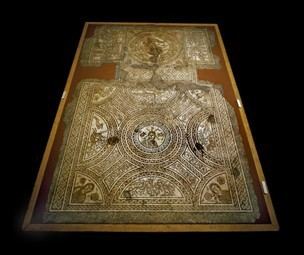
The mosaic was discovered in 1963 by the local blacksmith, (Walter) John White. Although it was excavated by the Dorchester Museum and lifted for preservation, none of the rest of the building has been examined. It is generally assumed to have been a villa. The layout of the mosaic room certainly resembles a Roman triclinium, or dining room. However, it might easily be a church or other Christian complex. There were no finds dated earlier than c. 270 AD.
